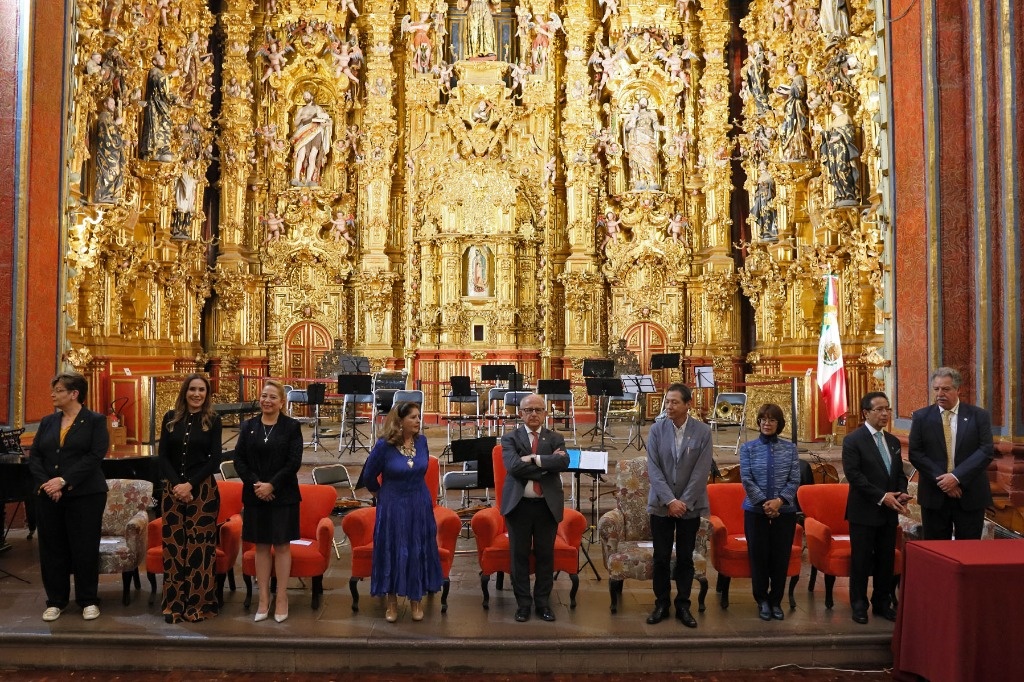To celebrate the 60th anniversary of the National Museum of the Viceroyalty (MNV), located in the municipality of Tepotzotlán, State of Mexico, the National Institute of Anthropology and History (INAH) presented the new board of trustees of that facility, called MNV Benefactors.
The name is in honor of the benefactors of the Jesuits who helped them financially in the New Spain era, which is made up of businessmen, merchants and inhabitants of the State of Mexico, for the most part.
The director general of INAH, Diego Prieto Hernández, said that the integration of this free association, organized by citizens, with the objective of supporting the site in its task of “study, care, recovery, defense, dissemination and social enjoyment of our cultural heritage, particularly that which corresponds to the viceroyalty of New Spain.”
He also unveiled a commemorative plaque. In this regard, the official said that “the National Museum of the Viceroyalty, founded in 1964 inside an emblematic building for baroque architecture, is one of the most beloved settings of the INAH, which is linked to the other four national museum spaces: Anthropology, World Cultures, Interventions and History.”
Prieto Hernández also announced that the intention is to restructure the MNV’s museographic script, by “strengthening the discourse and reflection on the catastrophe that was the Spanish invasion, as well as highlighting the Afro-Mexican presence and the resistance of indigenous populations,” for which, he said, there is already a council, an academic commission and a master plan.
Meanwhile, the head of the MNV, María Amparo Clausell, said that, “in these 60 years, the site has carefully safeguarded the 34,133 pieces of its collection, including paintings, sculptures, feather art, ivory, porcelain, shells, furniture and silverware, etc.
This museum preserves its original features, built and decorated between the 17th and 18th centuries, with the intervention of the most famous painters of New Spain, such as Miguel Cabrera, Cristóbal de Villalpando, José de Ibarra and Juan Rodríguez Juárez.
Among the upcoming challenges for the complex is streamlining the infrastructure to facilitate mobility for disabled people, as well as for the elderly, for which an elevator will be added.
Since 2010, the building has been recognized as a World Heritage Site by the United Nations Educational, Scientific and Cultural Organization, as part of the Camino Real de Tierra Adentro, in the Cultural Itinerary category.
#INAH #presents #board #trustees #National #Museum #Viceroyalty
– 2024-09-21 21:06:13
